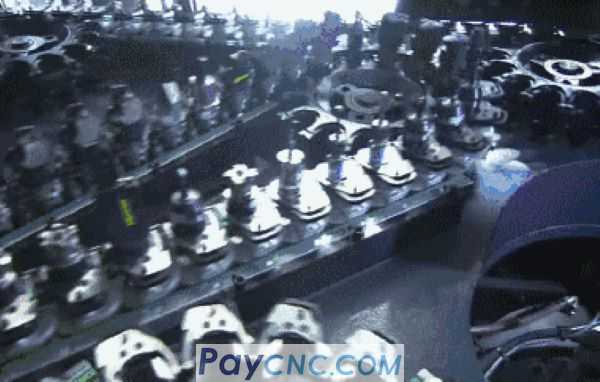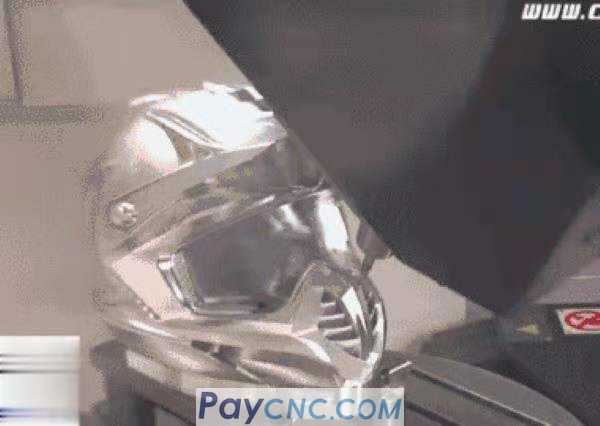Turning
If you don't agree, you will be the bead? This "turning" refers to turning processing. The key to turning is to rotate the workpiece to be processed, and then let the linearly moving tool approach them to sculpt the surface of the workpiece.
First, the workpiece is fixed on the machine tool by the chuck, and then the workpiece rotates at a high speed under the drive of the motor, and the speed can be controlled manually according to our processing requirements. Then, you can start to control the tool to sculpt on the surface of the workpiece, which is called "cutting".
Common turning tools are often made of high-speed steel or cemented carbide. In recent years, ceramic tools and synthetic diamond tools on the market are also widely used.
Different shapes of turning tools can meet various processing requirements:

In addition to the outer surface, the boring tool used in turning can also finish the inner surface where the workpiece has holes.
Milling
After talking about "car", what is "milling"? In fact, it still uses the rotating processing method, but this time it is the milling cutter's turn to rotate.
Traditional milling processing has two relative motion methods, one is like the above picture, the workpiece being processed is fixed, relying entirely on the milling cutter to sit on to rotate and translate by itself; the other is as shown in the figure below, the milling cutter Simply rotating, the workpiece can move in three directions: front, back, left and right, up and down.
The milling cutter is a multi-edged tool. In each milling process, each cutting edge of the milling cutter only participates in cutting once, and the rest of the time is stopped to facilitate heat dissipation. In this way, the cutting efficiency of the milling cutter is also higher than that of the single-edged turning tool. Milling cutters of different shapes can complete the processing of various planes, stepped surfaces, grooves and cavities.

CNC machine tools
The term CNC machine tool always seems to appear side by side with things like "car repair" and "excavator". What is it?
The ordinary machine tools we are talking about rely on manual operations to a large extent. For example, to adjust the speed of the workpiece, it is necessary to manually shift the push rod on the headstock. The CNC machine tool turns all these operations into "automatic gear". Before actual processing, the CNC machine tool will first use CAD software for computer-aided design drawing, and then simulate the entire processing process through CAM software. After everything is confirmed to be correct, import the compiled processing program into the CNC machine tool, install the workpiece, close the protective hatch, and then wait for the CNC machine tool to automatically process, and you can get the desired part.
However, automatic machining alone is not a big deal. CNC machine tools can also be upgraded to a "machining center" by adding a tool magazine. The machining center allows us to switch between dozens of tools, turning for a while, milling for a while, grinding again for a while...all can be done! The workpiece is always fixed on the fixture, and the base point does not need to be transferred, so changing the processing method will not affect the processing accuracy.

What kind of knife? Choose whatever you want! Tool magazine and tool change process of machining center.
After watching it for a long time, it was all simple styles, but it was not enough? Here is a more advanced one:

The helmet can also be made.
The machining of this helmet uses "5-axis milling". This time, the movement of the workpiece and the milling cutter is more flexible.
5-axis machining is the most advanced machining method among mechanical cutting methods. In the CNC machine tool, there are 6 coordinate axes: the linear axis XYZ in 3 directions, and the corresponding 3 rotary axes ABC (as shown in the figure below). The "3-axis" machine tool can only allow the workpiece and the tool to translate in three directions. It is used to process the surface of some basic shapes; the "4-axis" adds a rotation axis in one direction on the basis of XYZ, so It can cut some less complicated curved surfaces; when it comes to the "5-axis", there are two rotation axes that can be linked, which can handle quite complex curved surfaces.

In the coordinate system of CNC machine tools, in addition to linear motion in three directions, rotation in different directions is also added.
Planing
The working principle of planing processing is clear at a glance. Simple reciprocating motion has extremely low production efficiency compared with turning and milling. However, because of the simple structure of equipment and tools, it is still used for rough processing of the surface of the workpiece.
Grinding
Grinding is the use of abrasive tools such as grinding wheels and belts to cut the surface of the workpiece. In today's machining, the grinding head has been maturely integrated into the machining center of the CNC milling machine.
laser printing"
After watching the subtraction of cutting and grinding, this time it's the turn of the "addition". Unlike traditional casting, the picture shows a type of 3D printing suitable for metal parts processing-selective laser melting (SLM).
The commonly seen 3D printing methods are mainly fused deposition molding and light curing molding. The former stacks hot melt plastics layer by layer, while the latter irradiates liquid photosensitive resin layer by layer with specific light to form the required curing structure.
However, these two methods are not suitable for processing metals. To 3D print metal parts, you need to use metal powder and a laser that is enough to hold them together. As shown in the figure above, in a groove covered with metal powder, the computer controls a beam of high-power carbon dioxide laser to selectively sweep the surface of the metal powder. Wherever the laser goes, the metal powder on the surface is completely melted and combined, but the place not illuminated remains in the powder state. The whole process needs to be carried out in a sealed chamber filled with inert gas.
When the scanning of one layer of the "slice" is completed, the lowering table will drive the cured semi-finished product to lower one layer, and then the scraper will smooth the surface to spread the metal powder evenly. On the surface of the new layer of metal powder, the laser scans and irradiates again, and the newly solidified layer will be firmly cladding on the previous layer. After the entire part is manufactured, the descending platform will lift the part from the powder pile:
The selective laser melting technology is derived from selective laser sintering (SLS), which uses pure metal powder, does not require the participation of a binder, and only requires one sintering, so it can get better performance parts.
|
 |
| Products Catalogue | Home | About Us | Retrofit | Download | News | Tech Support | Contact Us | |
|
|
|
